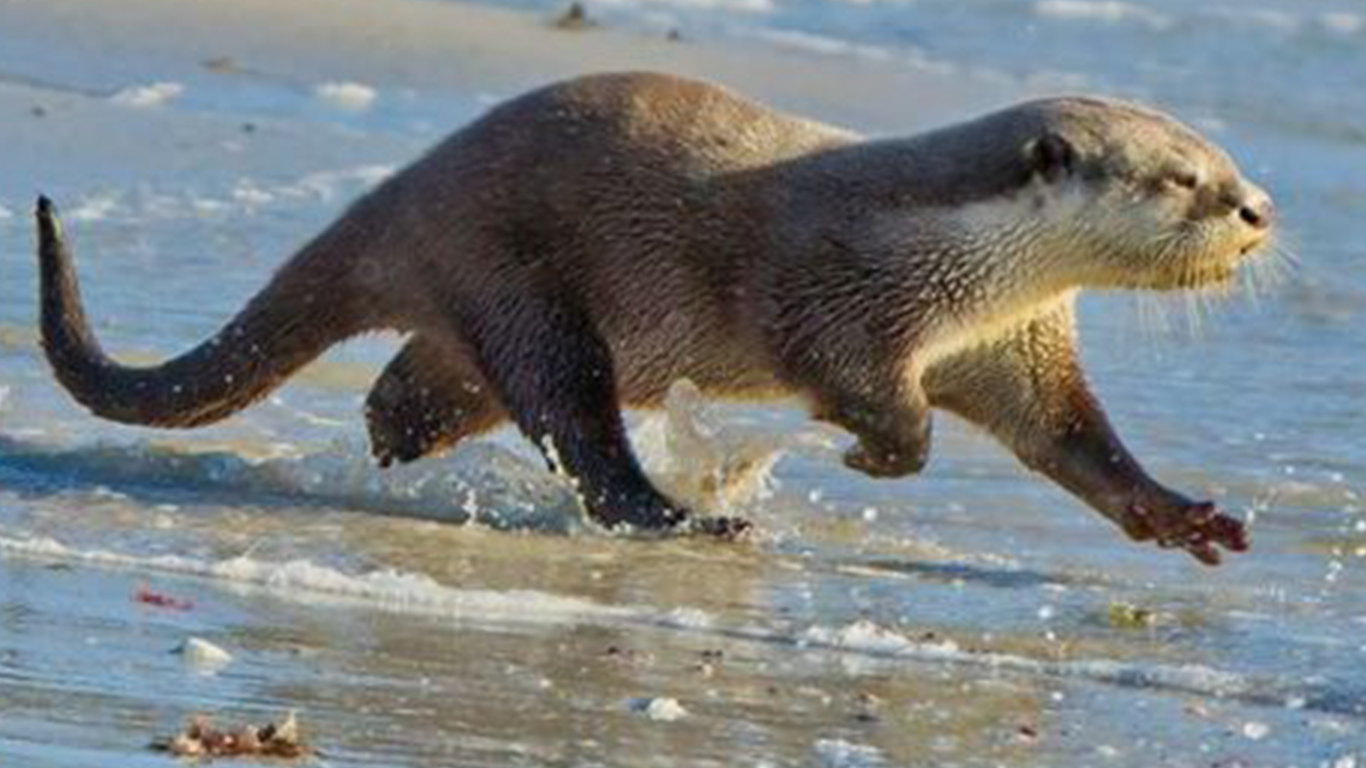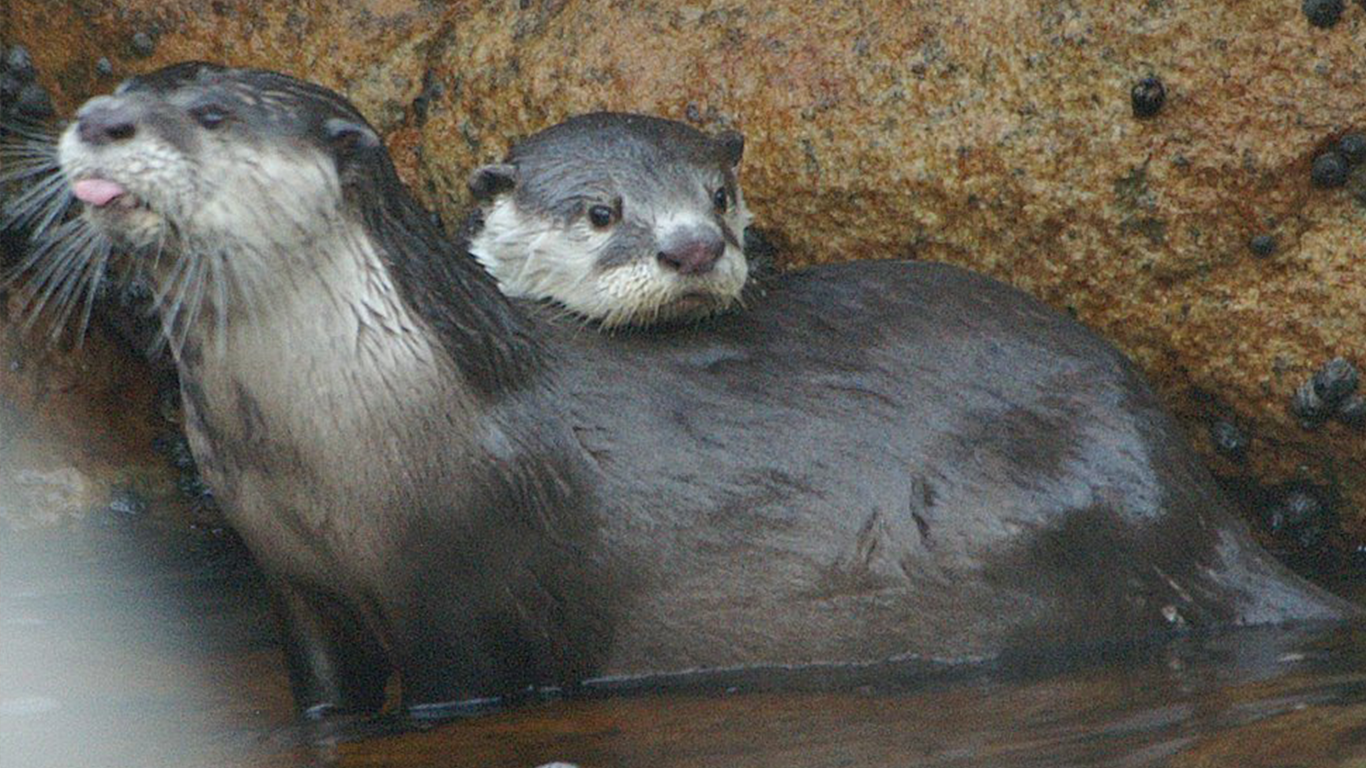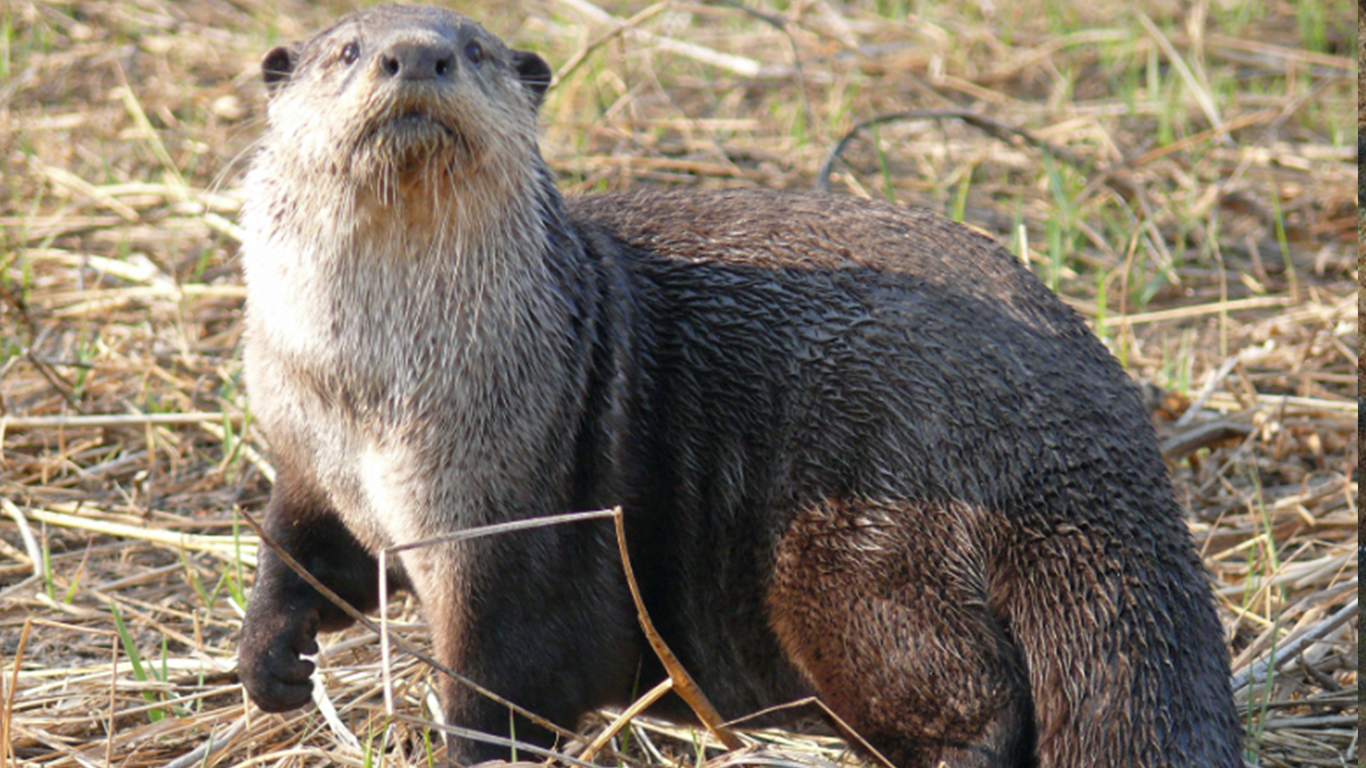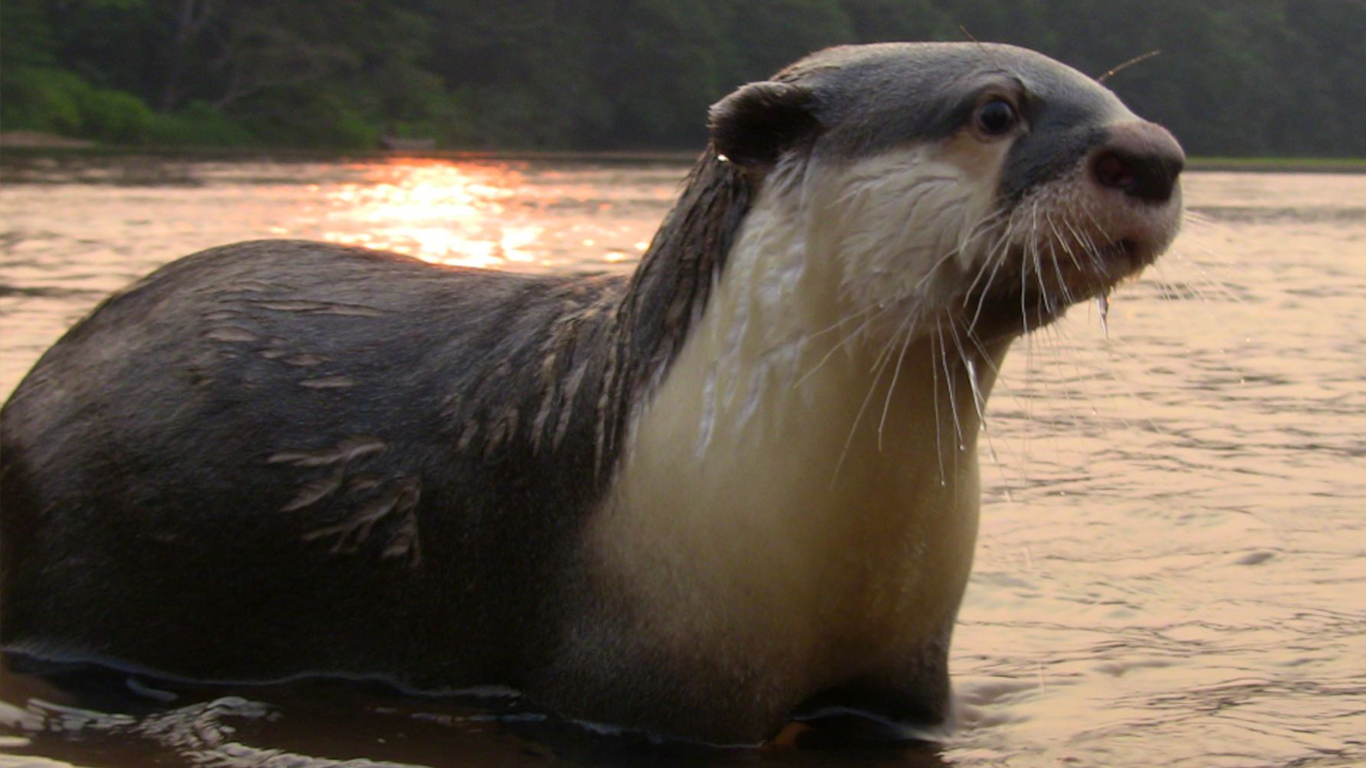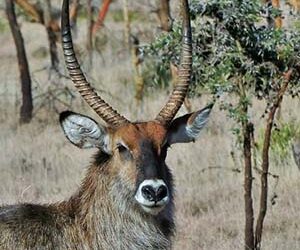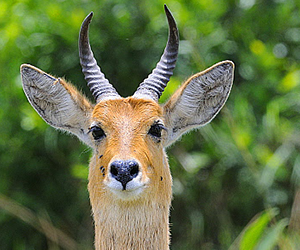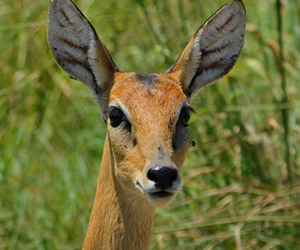Animal Name: African Clawless Otter
Scientific Names: Aonyx capensis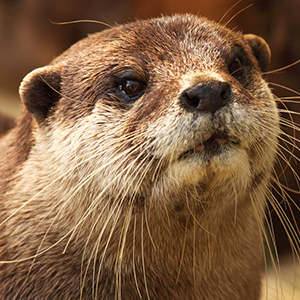
Home »
African Clawless Otter Introduction
The African clawless otter (Aonyx capensis), also known as the Cape clawless otter or groot otter, is the second-largest freshwater otter species. It inhabits permanent water bodies in savannah and lowland forest areas through most of sub-Saharan Africa. It is characterised by partly webbed and clawless feet, from which their name is derived. The word 'aonyx' means clawless, derived from the prefix a- ("without") and onyx ("claw/hoof").
Description of African Clawless Otter
The African clawless otter has a chestnut-coloured thick, smooth fur with almost silky underbellies. It is characterized by white facial markings that extend downward towards its throat and chest areas. Paws are partially webbed with five fingers, but without opposable thumbs. All lack claws except for digits 2, 3, and 4 of the hind feet. Its large skull is broad and flat, with a relatively small orbit and a short snout. Molars are large and flat, used for crushing of prey. Male otters are slightly larger than females on average. Adults are 113–163 cm (44–64 in) in length, including their tails that comprised about a third of their length. Weights range from 10–36 kg (22–79 lb), with most otters averaging between 12 and 21 kg (26 and 46 lb). They are the third largest otter on average after the sea otter and giant otter and probably the third largest extant mustelid appearing to slightly outrival the wolverine, hog badger and European badger in mean body mass. Despite being closely related to the Asian small-clawed otter, the African clawless otter is often twice as massive as that relatively diminutive mustelid.
Obtain a personalized quote that suits your preferences and budget.
Do you have a question about an African safari?
Check the National Parks
No Results Found
The page you requested could not be found. Try refining your search, or use the navigation above to locate the post.

